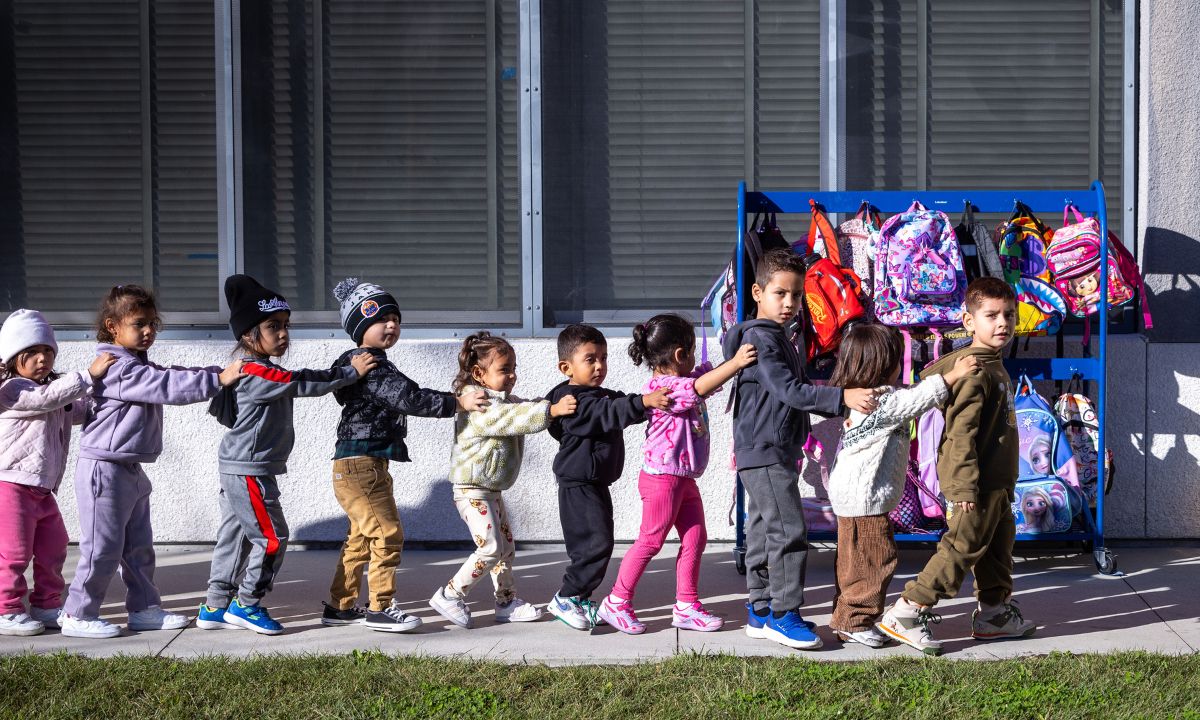It’s Time to Reject Chronic Absenteeism as the New Normal in Student Attendance
Cohen: Start by improving data, so it's clear who is missing school, and putting an end to messaging that implies skipping class isn't a big deal

Get stories like this delivered straight to your inbox. Sign up for The 74 Newsletter
The day education leaders, researchers and advocates have feared is here: It is now clear that student attendance will not return to pre-pandemic rates on its own. The number of students missing more than 10% of the school year skyrocketed in the COVID years from 15% in 2019 to 28% in 2022. Five years after the pandemic, attendance still hasn’t returned to normal, with 23% of K-12 students chronically absent. America must reject the new normal of lower student attendance rates and act now to get attendance back on track. Here are two ideas to get all kids in school every day.
First, increase transparency in attendance data.
It is impossible to solve a problem without knowing what it is. A recent Attendance Works policy brief reveals that “as of mid-April 2025, the majority of states (43) published their chronic absence data for 2023-24. This represents a significant improvement.” Improvements are relative; this is embarrassing. There is nothing to celebrate in that,10 months after the previous school year, most states have shared data that is now wildly out-of-date. The federal government alone has spent around $1 billion in the past two decades to help states build longitudinal data systems, the exact kind of operation that can readily track and publish chronic absenteeism data. It’s the state longitudinal data system in Rhode Island, for example, that allows the state to publish daily attendance updates for every school. Any state that continues to publish merely annual chronic absenteeism data is making a statement that attendance isn’t paramount.
This lack of detailed state data hides the fact that not all students are missing school equally, even though the attendance gap between low-income students and their more affluent peers has grown since the pandemic. University of Southern California professor Morgan Polikoff shared new findings last month that show “substantial variation” between the chronic absenteeism rates of different groups of students. Least likely to miss school are gifted students, Asian children and students in grades 2 through 5. Most likely to be chronically absent? Homeless and foster youth, low-income students and 12th graders.
Low-income kids, in other words, were most likely to suffer the most learning lost during the pandemic, were more likely to experience longer periods of school closures and remain significantly more likely to miss more than 10% of school days. If “every day counts,” as the attendance slogan states, why won’t most states publicly report on this data but once a year?
Parents should demand better attendance data, too. It’s not only the kids missing school who lose out — research shows that all students learn less in schools with high chronic absenteeism rates. This finding holds at the classroom level, too. Parents have a right to know what the chronic absenteeism rate is at their child’s school and in their child’s classroom, and should receive clear information about their own child’s attendance patterns.
Second, reset the messaging.
One explanation for the continued higher rates of chronic absenteeism is an uncomfortable one — that the education sector is allowing it to happen. State, district and school leaders, along with mayors, city councils, state legislators and other political leaders, all play a role. Schools have sent mixed messages to students and families over the past few years about attendance, whether that’s allowing students to “erase” an absence by attending a Saturday session or the fact that they continue to earn high grades and timely diplomas despite many absences. And don’t forget the biggest mixed message of all: When schools closed during the pandemic, whether for two months or two years, the clear signal to parents was “schools are closed but your child will be fine.” But one new research study shows that graduation rates continued to climb after COVID despite rampant chronic absenteeism and serious learning loss. This cemented the implicit idea that physically attending school every day is no longer required for academic success.
To undo this unintentional messaging, political and education leaders can start by acknowledging that pandemic-era school closures harmed students and should be avoided in any future crisis at all costs. Next, they should tell parents that students are expected to attend school every day. The new message must be: “If your child is not in school every day, she will fall behind.” Consider incentives like one implemented by a charter high school in Brooklyn, New York, with low absenteeism: Only seniors who maintain a certain attendance threshold are permitted to leave the premises for lunch. In middle and high school, talk to students directly about why coming to school every day is essential for their long-term goals. If incentives and motivations aren’t enough, make promotion to the next grade contingent on attendance. If a student has missed more than 20 days, require summer school or make the student repeat a grade. Think this unfair? It’s hard to conceive of something more unfair to children than passing them from grade to grade without ensuring they accumulate sufficient knowledge and experience.
Finally, it’s not enough to tell students, especially high schoolers, that they should come to school every day. The learning that happens in the classroom should be so good that they don’t want to miss it. This is a massive challenge, to be sure, but the one that may matter the most. It’s one thing to convince parents and students of the importance of coming to school every day, and another to make that attendance worthwhile. If a robust academic experience is the long-term goal for every public school student, members of society, from parents to politicians, must reject the new normal of scattershot attendance and get all kids back in school buildings every day. No hope remains but Americans’ own actions; better data and clear messaging are places to start.
Get stories like these delivered straight to your inbox. Sign up for The 74 Newsletter

;)
